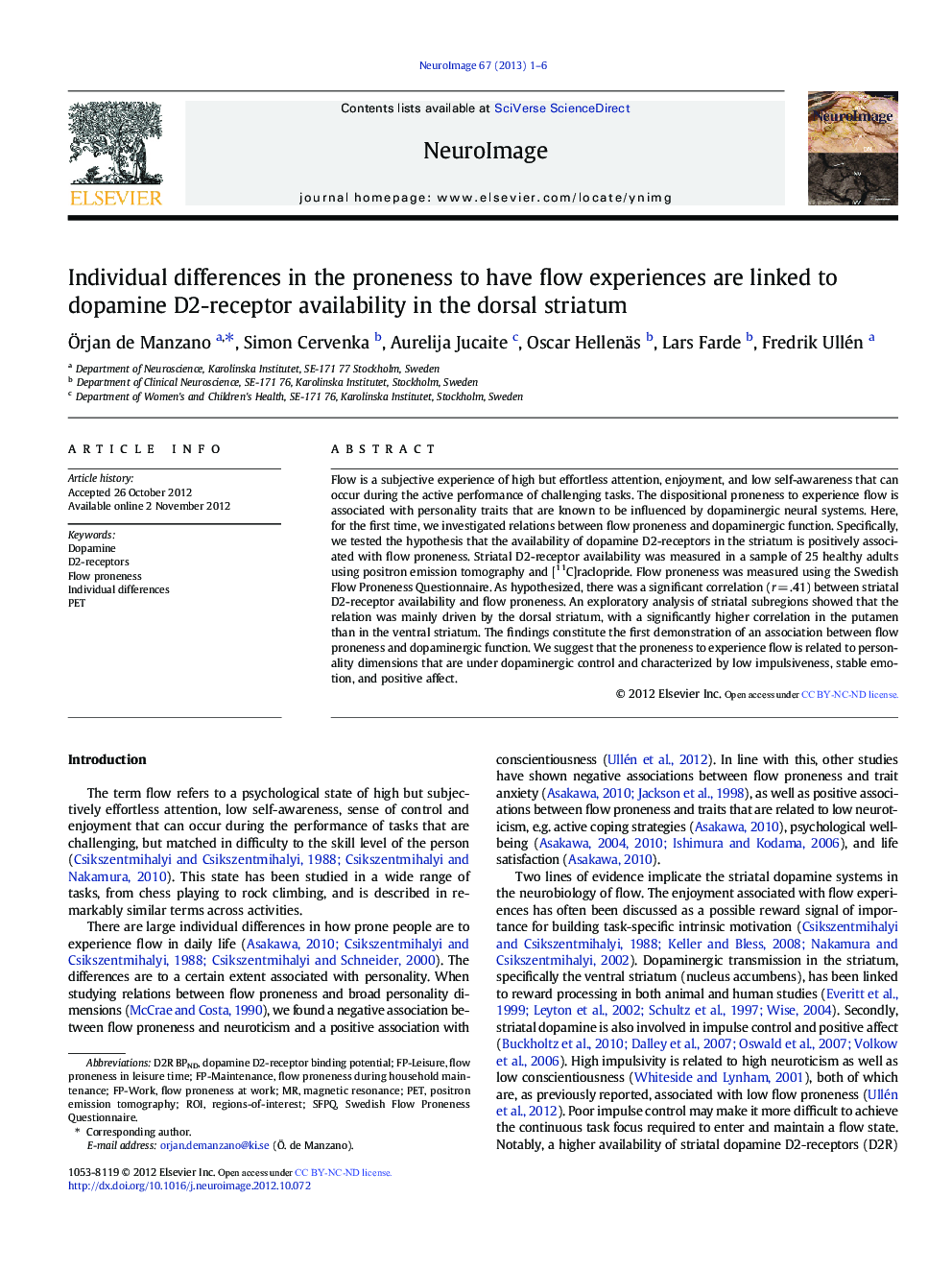| Article ID | Journal | Published Year | Pages | File Type |
|---|---|---|---|---|
| 6029934 | NeuroImage | 2013 | 6 Pages |
Flow is a subjective experience of high but effortless attention, enjoyment, and low self-awareness that can occur during the active performance of challenging tasks. The dispositional proneness to experience flow is associated with personality traits that are known to be influenced by dopaminergic neural systems. Here, for the first time, we investigated relations between flow proneness and dopaminergic function. Specifically, we tested the hypothesis that the availability of dopamine D2-receptors in the striatum is positively associated with flow proneness. Striatal D2-receptor availability was measured in a sample of 25 healthy adults using positron emission tomography and [11C]raclopride. Flow proneness was measured using the Swedish Flow Proneness Questionnaire. As hypothesized, there was a significant correlation (r = .41) between striatal D2-receptor availability and flow proneness. An exploratory analysis of striatal subregions showed that the relation was mainly driven by the dorsal striatum, with a significantly higher correlation in the putamen than in the ventral striatum. The findings constitute the first demonstration of an association between flow proneness and dopaminergic function. We suggest that the proneness to experience flow is related to personality dimensions that are under dopaminergic control and characterized by low impulsiveness, stable emotion, and positive affect.
⺠We study the role of dopamine D2 receptors in the proneness to have flow experiences. ⺠Flow proneness was measured along with striatal D2-receptors in adults using PET. ⺠The results show a correlation between D2-receptor availability and flow proneness. ⺠The association was mainly driven by the dorsal striatum. ⺠We suggest that flow proneness is linked to personality traits influenced by dopamine.
